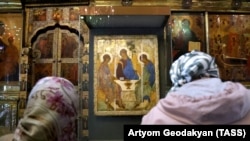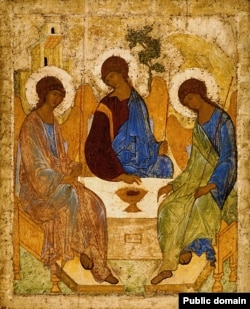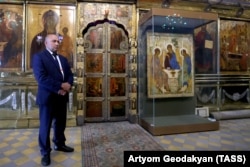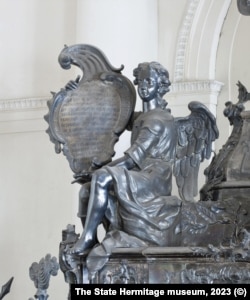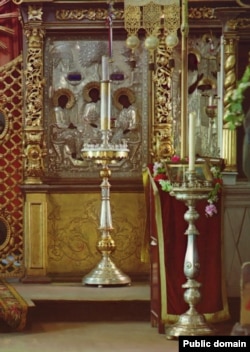The controversial handovers of two of Russia's most revered pieces of art to the Orthodox Church leave experts wondering what may be next.
This is Trinity, a Russian religious icon that was painted in the 1420s by Andrei Rublev depicting three angels visiting Abraham. In the background the Oak of Mamre places the scene in today's Hebron, a Palestinian city in the southern West Bank where a Russian monastery now stands.
On May 15, the website of the Moscow Patriarchate announced that the artwork, which has been called "Russia's most famous icon," would be returned to the church after being held in Moscow's Tretyakov Gallery since 1929.
Days before the Trinity icon news, on May 10, it had been announced that the silver sarcophagus of St. Aleksandr Nevsky that currently stands in St. Petersburg's Hermitage Museum would be handed over to the church for "49 years with the possibility of further extension." The memorial is set to be moved into a monastery named after Nevsky that stands some four kilometers east of the Hermitage.
Patriarch Kirill, the head of the Russian Orthodox Church, later thanked Russian President Vladimir Putin personally for the transfer and said, "May God help this good endeavor -- the return of sacred items -- to continue."
Irina Sosnovtseva, a senior researcher at the Russian Museum and expert in ancient Russian art, says many experts are doubtful the church will be able to adequately care for the delicate treasures.
"Of course, they will promise us anything now. They will say there will be excellent conditions, excellent restorers," she says. "Unfortunately the bitter experience of dealing with the Russian Orthodox Church previously shows that as soon as they receive an artwork, any guarantees they made are ignored. They stop letting restorers in and place obstacles at every step."
Sosnovtseva believes the current handovers are "just the beginning" and says "after Trinity is handed back, [church officials] will simply be able to walk through the exhibition halls and say, 'Wrap this for me.'"
Patriarch Kirill, who has been openly supportive of the Russian invasion of Ukraine, said he had made a request only for the church to borrow the Trinity icon for two weeks. Instead, Putin pledged the artwork to the church in perpetuity.
Trinity is scheduled to be put on display inside Moscow's Cathedral of Christ the Savior in time for services marking Pentecost on June 4. From there it will reportedly be transported to the Trinity Lavra of St. Sergius, northeast of Moscow.




